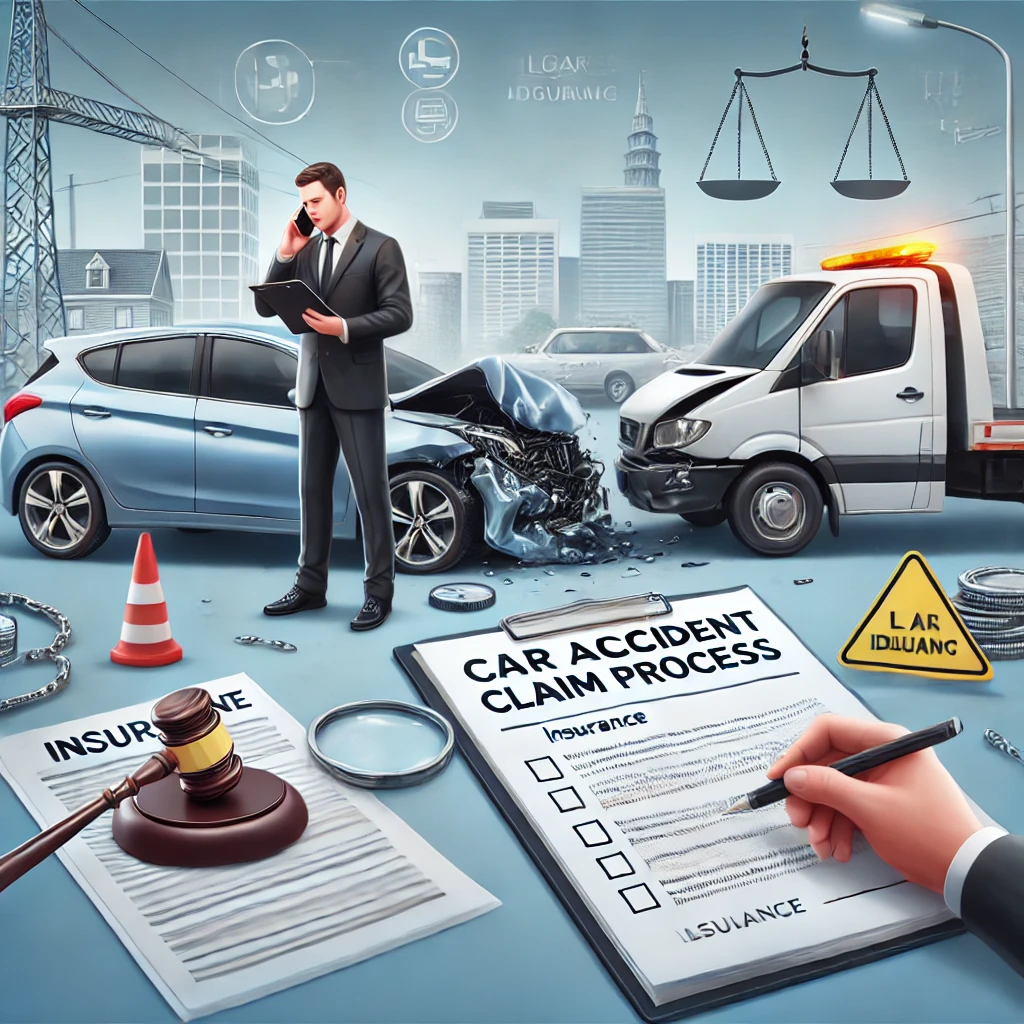On roadways all throughout the world, car accidents are a regular occurrence that frequently results in major injuries, financial losses, and emotional suffering. Whether it’s a tiny fender bender or a catastrophic catastrophe, handling an automobile accident claim can greatly affect the pay-back. From knowledge of culpability to settlement negotiations, this book will bring you through every phase of the vehicle accident claim procedure.
Thank you for reading this post, don't forget to subscribe!## Comprehending Car Accident Claims
A automobile accident claim is a legal request for monetary recovery following an accident. Dealing with insurance companies, police enforcement, and occasionally solicitors is part of it. State regulations, insurance policies, and fault determining affect the claim procedure.
### Kinds of Vehicle Accidents Claims
- Property Damage Claims – covers the replacement or repair of your personal items and car wrecked in the collision.
Included in Personal Injury Claims are medical expenditures, lost income, pain and suffering, and rehabilitation expenses.
Should an automobile accident claim a fatality, the victim’s family might pursue reimbursement for burial costs, lost income, and lost companionship.
When the at-fault driver has inadequate insurance, uninsured/underinsured motorist claims offer compensation. Procedures Following a Vehicle Accident
1. Guarantee Safety and Consult a Doctor First concern should be your health and safety. Immediately summon emergency services whether you or others are wounded. Seeking medical assessment is very important even if you do not feel hurt since certain injuries may show up later.
2. Call the cops. When you file a claim, a police report is a vital piece of proof. It offers an objective account of the incident together with quotes from witnesses and the engaged parties.
3. compile data Gathering data enhances your case. Key material includes pictures of the crash site, damaged cars, and injuries.
Witness contact details
Dashcam, or surveillance film
Insurance information of the pertinent parties
4. Notify Your Insurer Tell your insurer straight away about the accident. Give accurate information; avoid owning responsibility as culpability is decided by means of an inquiry.
5. Track Costs and Medical Records Save all of your medical records, doctor’s reports, and injury-related receipts. This records helps you to substantiate your medical compensation claim.
6. See a Car Accident Lawyer (If Appropriate) Hiring a lawyer will help you maximise your pay whether your claim is complicated or includes large damages. Attorneys undertake legal procedures if needed and communicate with insurance providers. Determining Car Accident Damage State legislation and accident situation affect fault determination. Typical techniques include:
Officers evaluate the situation and render an official fault assessment in police reports.
Third-party reports enable a better picture of the accident to be created.
Traffic laws violations such speeding, running red lights, or careless driving help to explain error.
Experts in accident reconstruction examine data to ascertain the course of events. Fault Systems United States The motorist in charge of the collision has liability for damages.
Regardless of fault, every driver’s insurance covers their medical bills in no-fault states.
Comparative negligence states lower compensation depending on each party’s share of responsibility. Documenting a Vehicle Accident Claim
1. Get Your Insurance Company in Touch Notify the mishap and supply required paperwork. A claims adjuster will be assigned by the insurance to evaluate losses.
2. File, if relevant, a Third-Party Claim. Should the other motorist be at fault, submit a claim to their insurance provider for payment.
3. Get Repair Approximations To find out how much fixing your car will cost, get quotations from several auto repair companies.
4. Negotiate Your Claim Many times, insurance firms provide meagre starting pay-offs. Should the offer seem unjust, be ready to bargain or seek legal advice. Typical Difficulties in Auto Accidents Claims
1. Liability Disputed Should the opposing side deny responsibility, compile more proof including expert views and witness statements.
2. Low Settlement Offerings Insurance firms want low payments. Strong documentation and bargaining help to raise pay.
3. Handling Delayed Claims To speed your claim, keep aggressive and often follow up with insurance companies.
4. Denied Arguments Should your claim be refused, go over the grounds, offer more proof, or think about legal action. Maximising Your Settlement after an Auto Accident One strong evidence source is thorough documentation supporting your argument. - Know Your Policy Coverage – Knowing your insurance policy stops lowball proposals.
- Be Careful with Statements – Steer clear of saying anything that could be turned against you.
- See an Attorney — Legal experts can bargain for higher pay-back.
- Calculate the Full Value of Your Claim – Think through future expenses, pain and suffering, medical bills, lost income. Summary Though navigating a vehicle accident claim might be difficult, knowing the procedure helps you to pursue just compensation. Maximising your payout and recovering from the financial load of an accident depends on following the correct procedures, compiling proof, and bargaining successfully. See a vehicle accident attorney if you have problems to be sure you get the money you are due.
